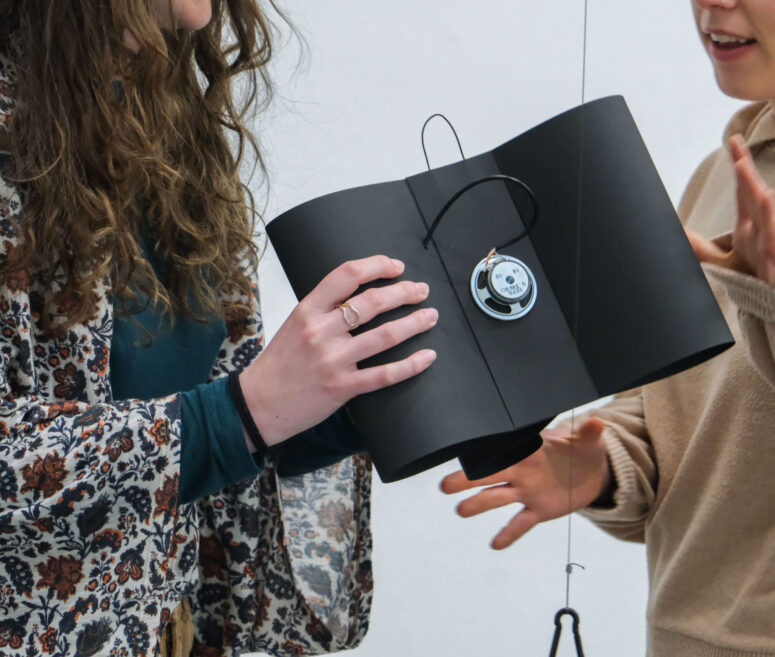The common thread running through the works of the artists featured in Fossi io teco; e perderci nel verde is one of shared participation in wonder. An enchantment that, for centuries, has stood at the center of philosophical inquiry—from Plato to Aristotle, from Kant to Hannah Arendt and, more recently, Sara Ahmed, to name but a few.
And not only: Giovanni Pascoli also placed wonder at the core of his poetics, linking it to the figure of the fanciullino—the little child deep down within each of us who, despite all the noise of the world, still strives to be heard.[1] This concept, so central to Pascoli’s poetics, in my view merits rediscovery through four different dimensions: the contemplative, the sonic, the linguistic, and those of Veder Nuovo e Veder Da Antico (“To see anew, and to see from the ancient”).
Contemplation
The disposition of the soul and the body to contemplative action is fundamental in Pascoli’s gaze and in that of the fanciullino he describes. Through the act of contemplation—contemplari, from the Latin root, meaning “to draw into one’s own horizon;” “to see within a defined space called a templum”[2]—the fanciullino looks at the world and sees it again, as if for the first time, through a primordial gaze (“sguardo primigenio”).[3]
The world, observed with care and attention, is always new because, as Pascoli writes: “il nuovo non si inventa: si scopre” (“the new is not invented: it is discovered.”).[4]
Contemplation thus constitutes the preliminary stage to the awakening of the sense of wonder and serves as the starting point for all the works in this project.
The contemplation practiced by Umberto Pellini, for instance, is closely tied to a sense of responsibility toward the surrounding natural environment. The collection of creatures and entities we habitually and simplistically refer to as “nature” is perceived in its complexity and network of interrelated presences to be respected—not merely as a resource to be exploited freely.
Felicity Mangan’s artistic practice evolves similarly, based on the importance of active, precise listening—a disposition capable of perceiving even the faint rustling of leaves, akin to the altruistic ear of the fanciullino.
For sound artists Attila Faravelli, Enrico Malatesta, and Nicola Ratti, contemplation translates into a heightened perception of the surrounding sonic dimension. Their research is not oriented toward sound per se, but rather toward the relationship between sound, space, and the body. For each of them, contemplation and listening become a true modus operandi—a practice capable of extracting the perceptual layers of a given space.
The theatre company O Thiasos – TeatroNatura roots its work in contemplation through immersive exercises in which nature serves as both the stage and protagonist of the narration. After careful observation of the landscape, the performers actively involve the public in narratives tailored to the specific needs and peculiarities of the place.
Lorenzo Silvestri interprets contemplation through introspection and personal reflection, often including and impressing his affections into his work. Through the act of preservation, he grants places and relationships a monumental presence.
Finally, in the works of Valentina Viviani, contemplation confronts its limits: emerging is the human incapacity to represent the nuanced emotions tied to the perception and experience of a place—particularly when the landscape encapsulates the complex web of emotional relationships and subjectivities.
Sound
Since antiquity, wonder has been distinguished by the importance attributed to its sonic dimension. The harmony of wonder, in fact, is that feeling which, according to the Greeks, arises when one contemplates and admires the harmonic order of the kosmos.[5]
In Pascoli, sound is not just what comes from outside but also what resonates within us: it is the subtle voice of the fanciullino, deserving of our attention. His poems often serve as an invitation to this kind of attentive, receptive listening. Listening to the voice of the fanciullino, expressed through poetry, allows us to perceive the marvelous in what might otherwise remain unheard or invisible to our ears.
Felicity Mangan’s work—three audio cassettes made from recordings of soundscapes in various locations—exemplifies just how rich and complex the sonic dimension can be. Sound becomes the medium of relation between the self and the world, the instrument through which to perceive what so often escapes superficial attention.
The listening experience is further enhanced through the use of portable devices that allow for individual, autonomous listening on the go, integrating with the spatial dynamics and curatorial intent of the exhibition environment.
Superpaesaggio by Attila Faravelli, Enrico Malatesta, and Nicola Ratti, embodies this vision. The artists guide participants through a shared exploration of a soundscape in which listening becomes a collective act of mental and physical disposition. Every sound—whether created, amplified, or unexpected—interacts with the others in a composition that, in its apparent simplicity, invites the public to interpret listening as a valid form of experience.
Language
The language of the fanciullino musico (“the fanciullino musician”)[6] who resides within us is that of someone who “[speaks] for a long time, passionately, recounting every detail one after another and omitting none, […]. For everything he saw seemed new and beautiful to him, and he believed it seemed new and beautiful to his listeners as well.” (“[parla] a lungo, con foga, dicendo i particolari l’un dopo l’altro e non tralasciando uno, (…). Chè tutto a lui pareva nuovo e bello, ciò che vi aveva visto, e nuovo e bello credeva paresse agli uditori”).[7] The fanciullino is “the Adam naming everything he sees and hears.” (“l’Adamo che mette il nome a tutto ciò che vede e sente”).[8]
He names, describes, and explains the world, making it intelligible. Through this, he recognizes and values his surroundings, narrating and naming them, becoming a bridge of connection and mediation between them and other things.
This type of language and valuing of the natural world is reflected in the artistic practices of Pellini and O Thiasos – TeatroNatura. In Io, Tu, Una Casa, Una Città, Pellini represents the complexity of urban settlements through the metonymy of concrete and the use of a reduced scale. In Tempeste, Sista Bramini, Camilla dell’Agnola, and Nora Tigges turn to myth—a narrative born as a response to great existential questions—to address themes of destruction and rebirth.
Both artistic practices are expressed through linguistic choices of form and representation that act as a bridge to facilitate connection.
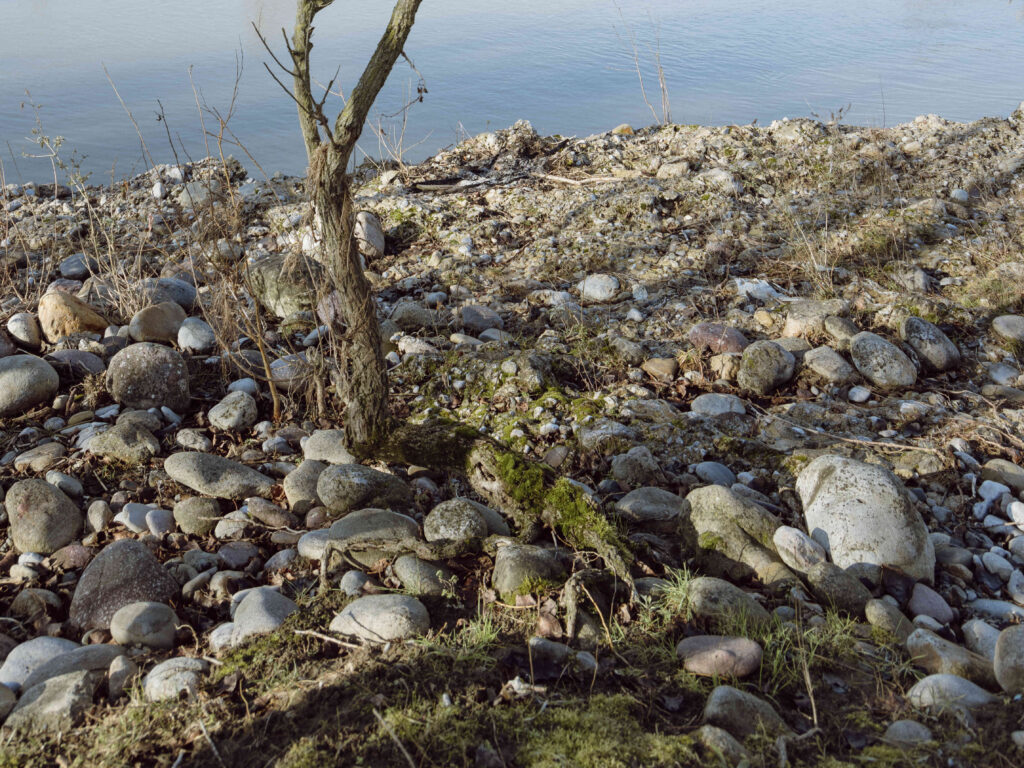
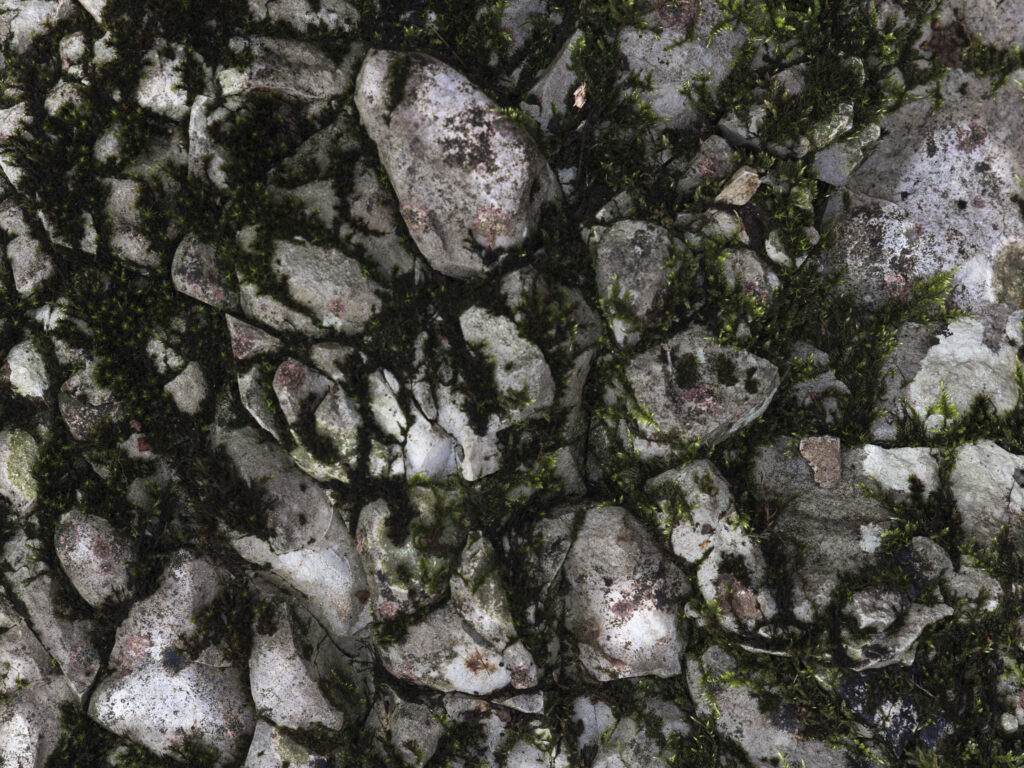
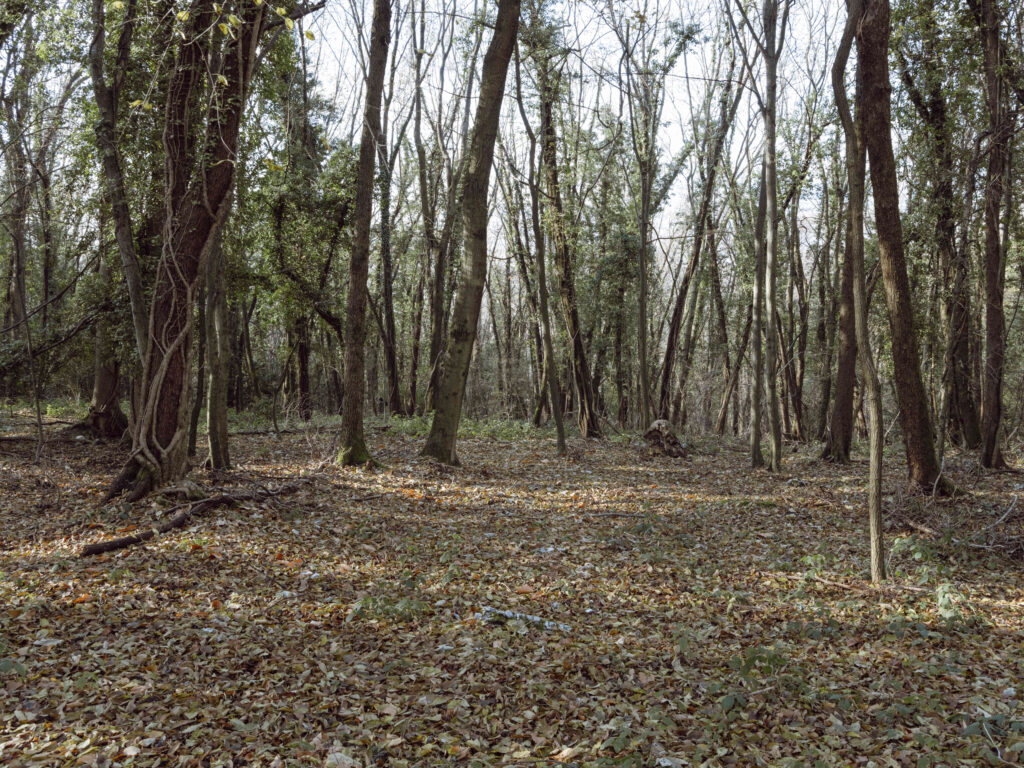
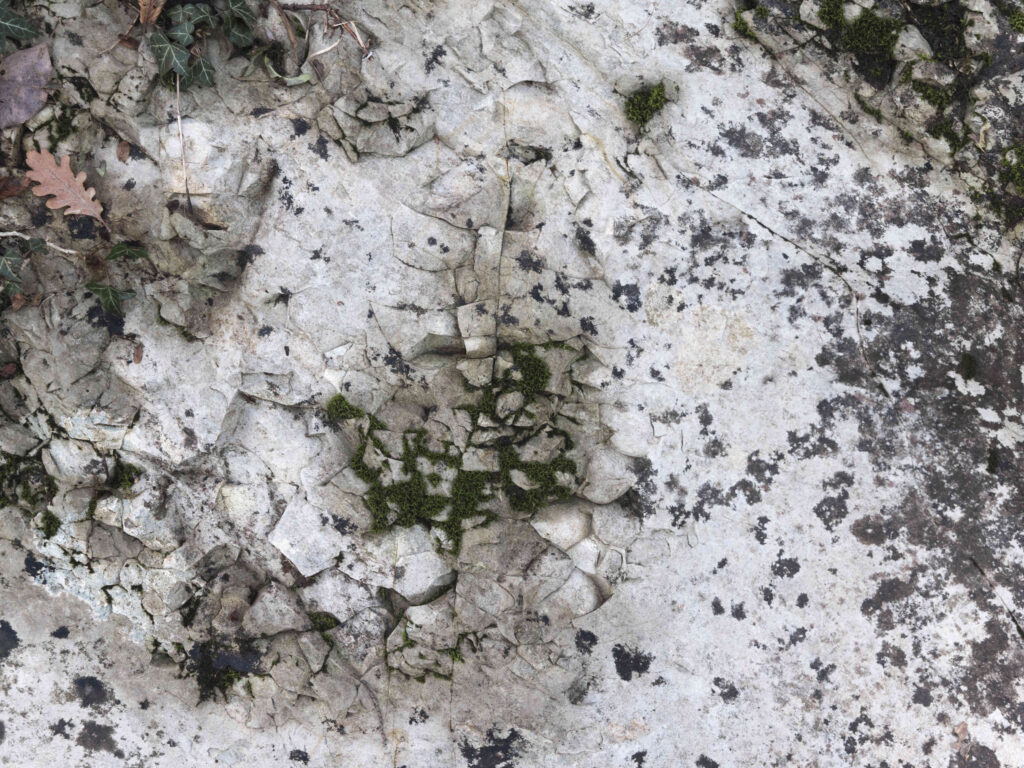
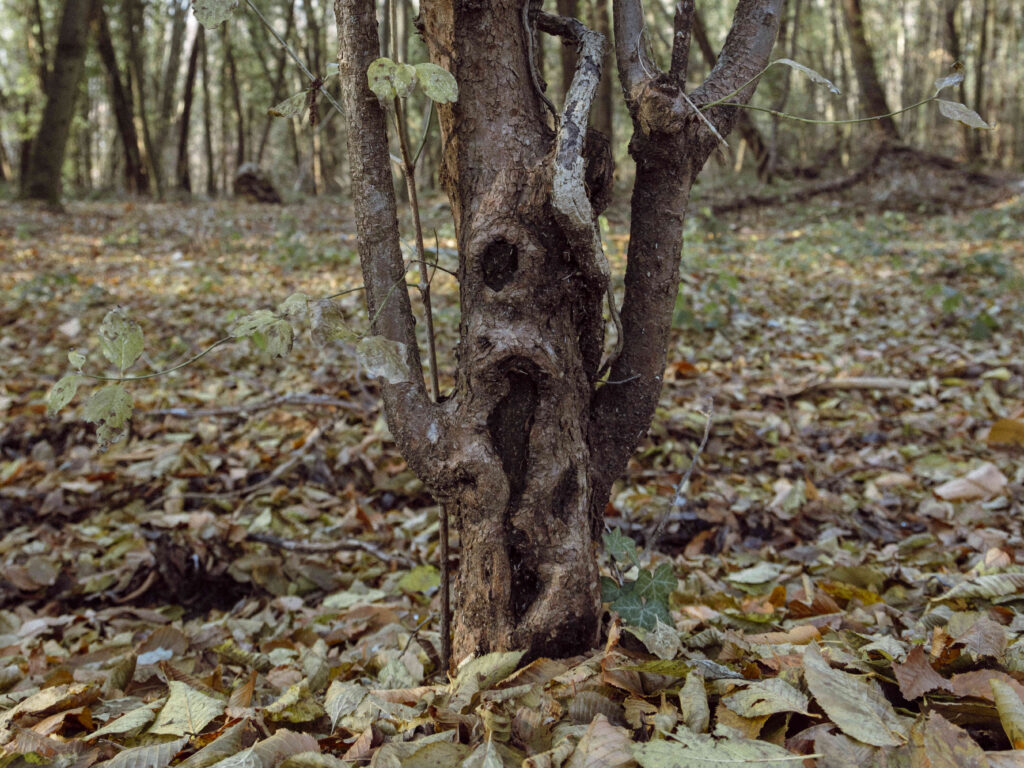
Veder Nuovo e Veder Da Antico
Finally, the fanciullino, in addition to reflecting, listening, speaking, and narrating what he sees and hears, also embodies contradiction. Though “very ancient” (“antichissimo”) and “eternal” (“eterno”), he is at the same time a small child endowed with an openness to wonder.[9] His duality reflects the complexity of being amazed by what was and what is. He knows how to “see anew” (“Vedere nuovamente”) and “see from the past” (“vedere dal passato”), and as Pascoli says: “How foolish are those who rebel against each of these necessities which seem to contradict one another—the timeline of seeing and saying anew, and the timeline of seeing and saying as always seen and said, always to be said!” (“Quanto folli sono coloro che si ribellano a ciascuna di queste necessità che sembrano contraddirsi, la linea temporale del vedere e dire nuovamente, e la linea temporale del vedere e dire come sempre visto e detto, da sempre sarà detto!”)[10]
This fusion of wonder and memory is found in the works of Lorenzo Silvestri and Valentina Viviani. In Youth youth youth, the Roman landscape is represented as a place of dichotomy—of motion and stillness, an ancient space that hosts contemporary movements and presences.
“Vertical Path” and “Through and Beyond,” from Atlas, Fragments for the Production of Landscape by Viviani, contemplate familial memory condensed into the symbol of the mountain as both presence and expression of the relationship between past and present.
Through cyanotype, photography, and embroidery, the artist explores and restores the symbolic value of ancient objects, ensuring their ongoing relevance.
Myricae
One of the defining traits of the works included in Fossi io teco; e perderci nel verde is that many of them could be described as Myricae. The title of the poetry collection by Giovanni Pascoli—which includes “Romagna,” from which the exhibition and its related events and performances take their name—recalls Virgil’s Fourth Eclogue: “Sicelides Musae, paulo maiora canamus. / Non omnes arbusta iuvant humilesque myricae”; (“Sicilian Muses, let us sing a somewhat loftier strain. Not everyone do orchards and the lowly tamarisks delight”).[11] Pascoli himself, in a letter to his friend Pietro Guidi in 1892, wrote: “Myricae—which literally means tamarisks (so many in San Mauro!)—is the word Virgil uses to refer to his bucolic songs, poetry that rises only slightly above the ground—humilis.” (Myricae – che letteralmente vuol dire tamerici (quante che n’è a San Mauro!) – è la parola che usa Virgilio per indicare i suoi carmi bucolici, poesia che si eleva poco da terra – humilis.”)[12]
In the context of this exhibition, the works partake in a grounded dimension—both literally and metaphorically. “They rise only slightly above the ground,” not only in terms of their material form, through the use of humble, simple materials—cardboard, paper, fabric, concrete, and sounds, or in the case of Corridori Lenti, only water and earth—but also in their meaning, in the themes they stir.
Their simplicity and fragility invite us to draw closer to the earth, to contemplate it, and to attune ourselves to its most intimate and primordial nature.
Bibliography
Arendt, Hannah. The Life of the Mind. Harcourt, 1978.
Pascoli, Giovanni, Pensieri e Discorsi, 1895–1906. Bologna: Zanichelli, 1914, https://archive.org/details/pensieriediscors00pascuoft/page/n5/mode/2up. Accessed: 01.26.2025.
Virgilio, Le Bucoliche e le Georgiche di P. Virgilio Marone tradotte in versi dal p. Antonio Ambrogi della Compagnia di Gesù, Volume 1, Rome: Gio. Zempel, 1770. https://books.google.it/books?id=Lmt5BTYzwgAC&redir_esc=y.
Pascoli, Giovanni, Myricae. Gianfranca Lavezzi (ed.), Milan: BUR Rizzoli, 2015
Vocabolario Treccani, Istituto della Enciclopedia Italiana. “Contemplare” www.treccani.it/vocabolario/contemplare/. Accessed: 01.25.2025
[1] Pascoli (1914: 2–4).
[2] Vocabolario Treccani, Istituto della Enciclopedia Italiana. “Contemplare” www.treccani.it/vocabolario/contemplare/. Accessed on 01.26.2025.
[3] Pascoli, cit., 15.
[4] Pascoli, cit., 16.
[5] Arendt (1978: 142, 143).
[6] Pascoli (1914: 7).
[7] Pascoli, cit., 4, 5.
[8] Pascoli (1914: 9).
[9] Pascoli (1914: 15).
[10] Ibid.
[11] Virgilio. https://www.loebclassics.com/view/virgil-eclogues/1916/pb_LCL063.49.xml?readMode=recto#:~:text=Sicilian%206%20Muses%2C%20let%20us,of%20the%20centuries%20begins%20anew.
[12] Pascoli (2015: 13, 14).



